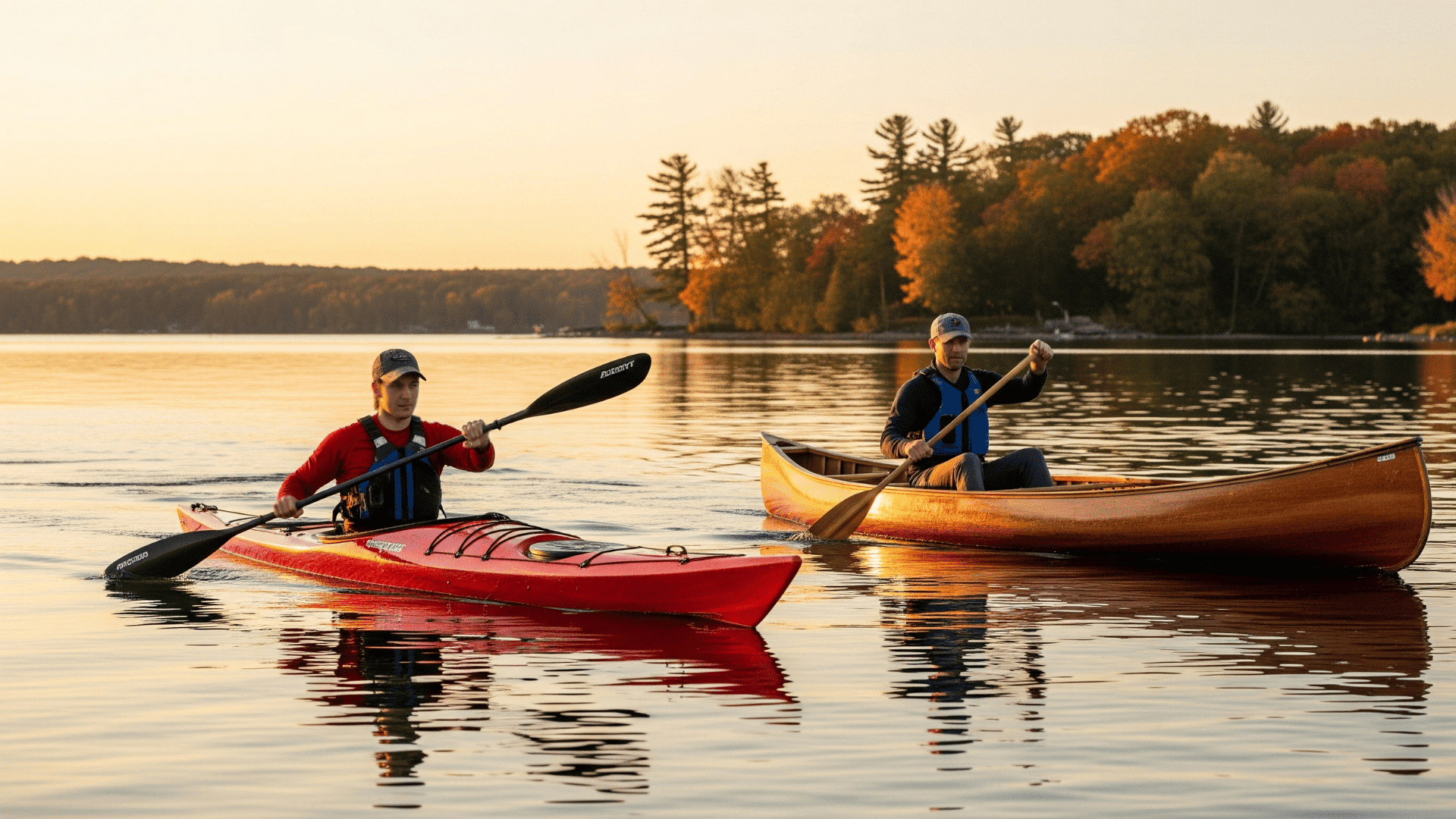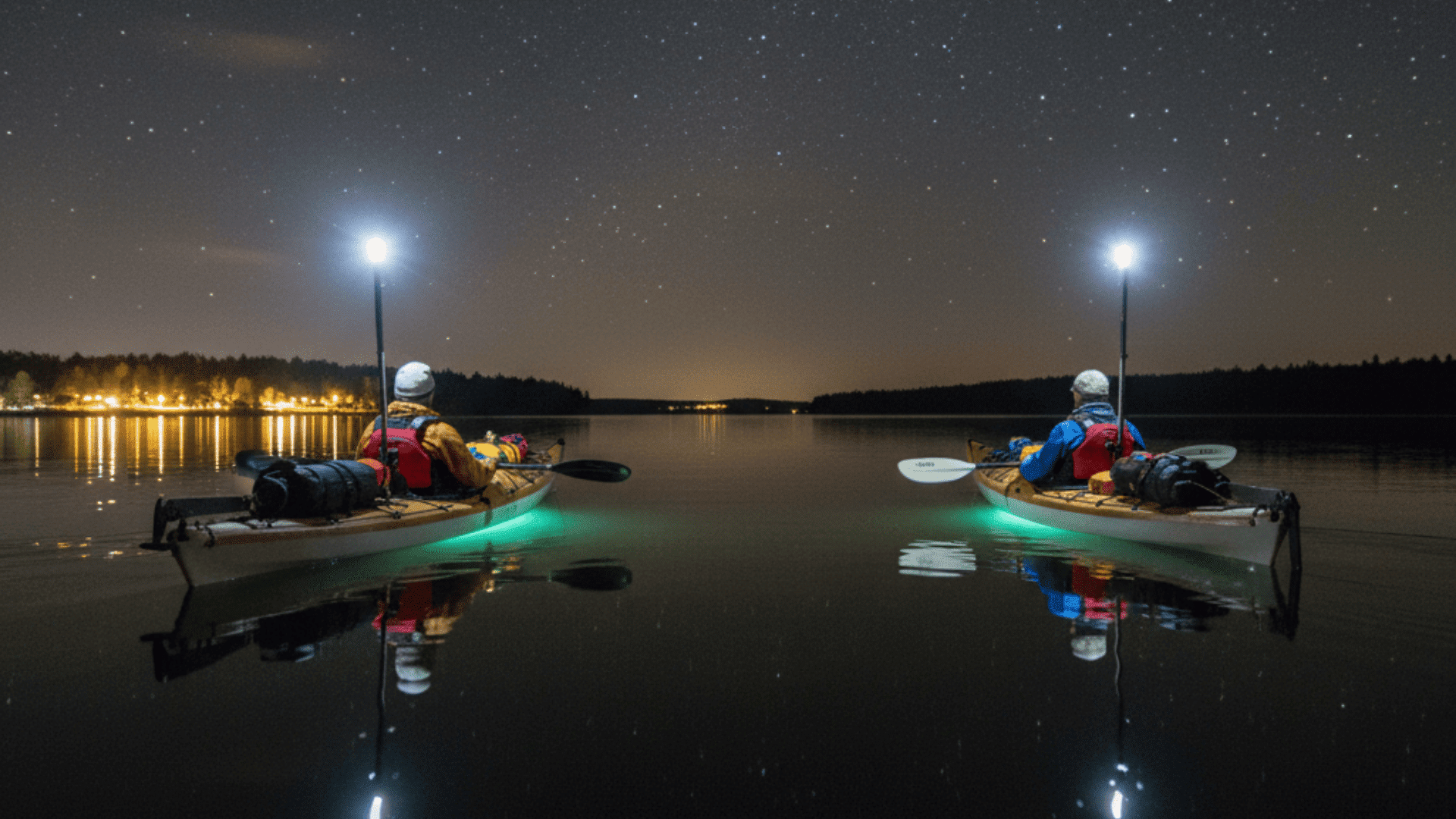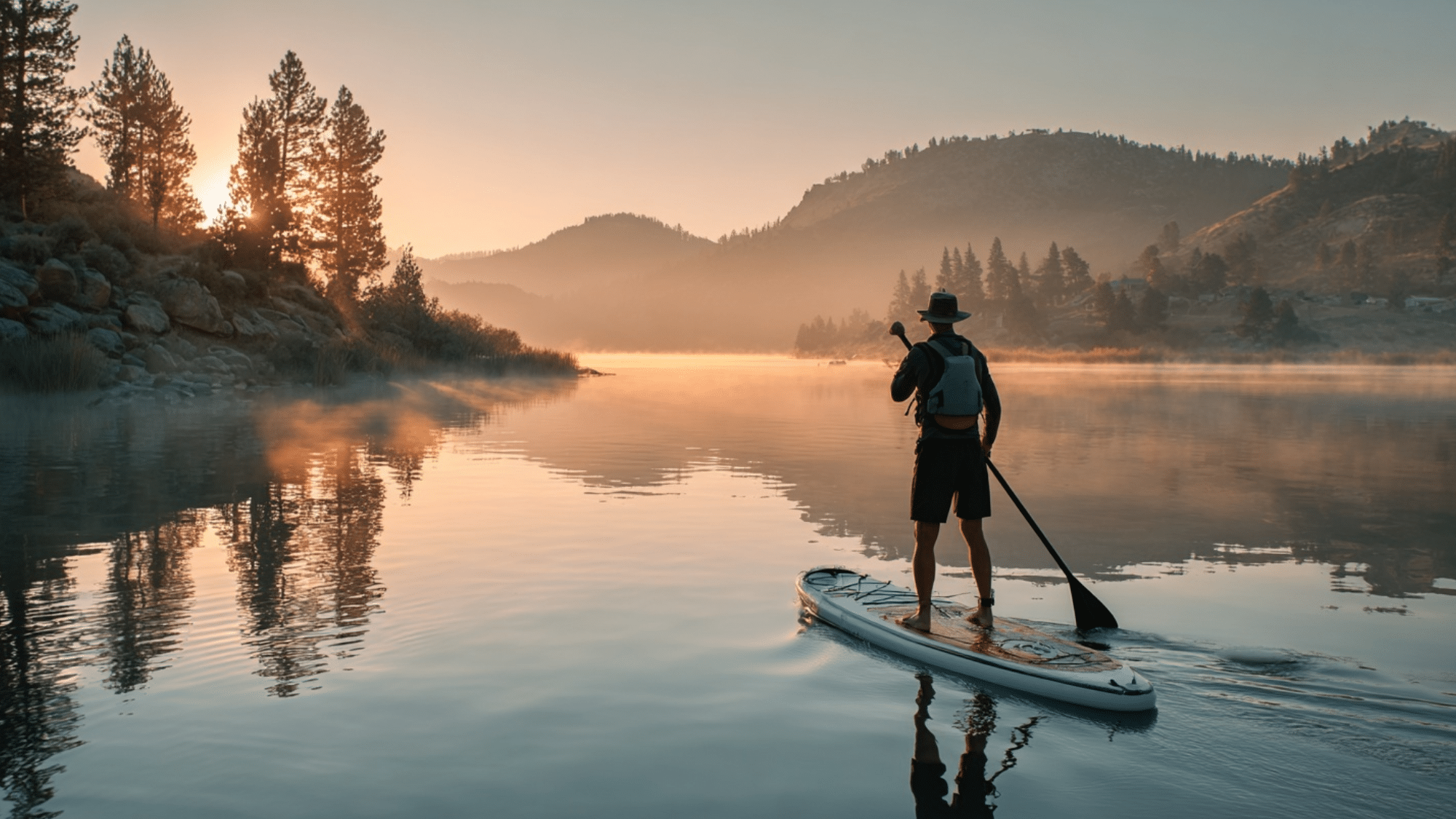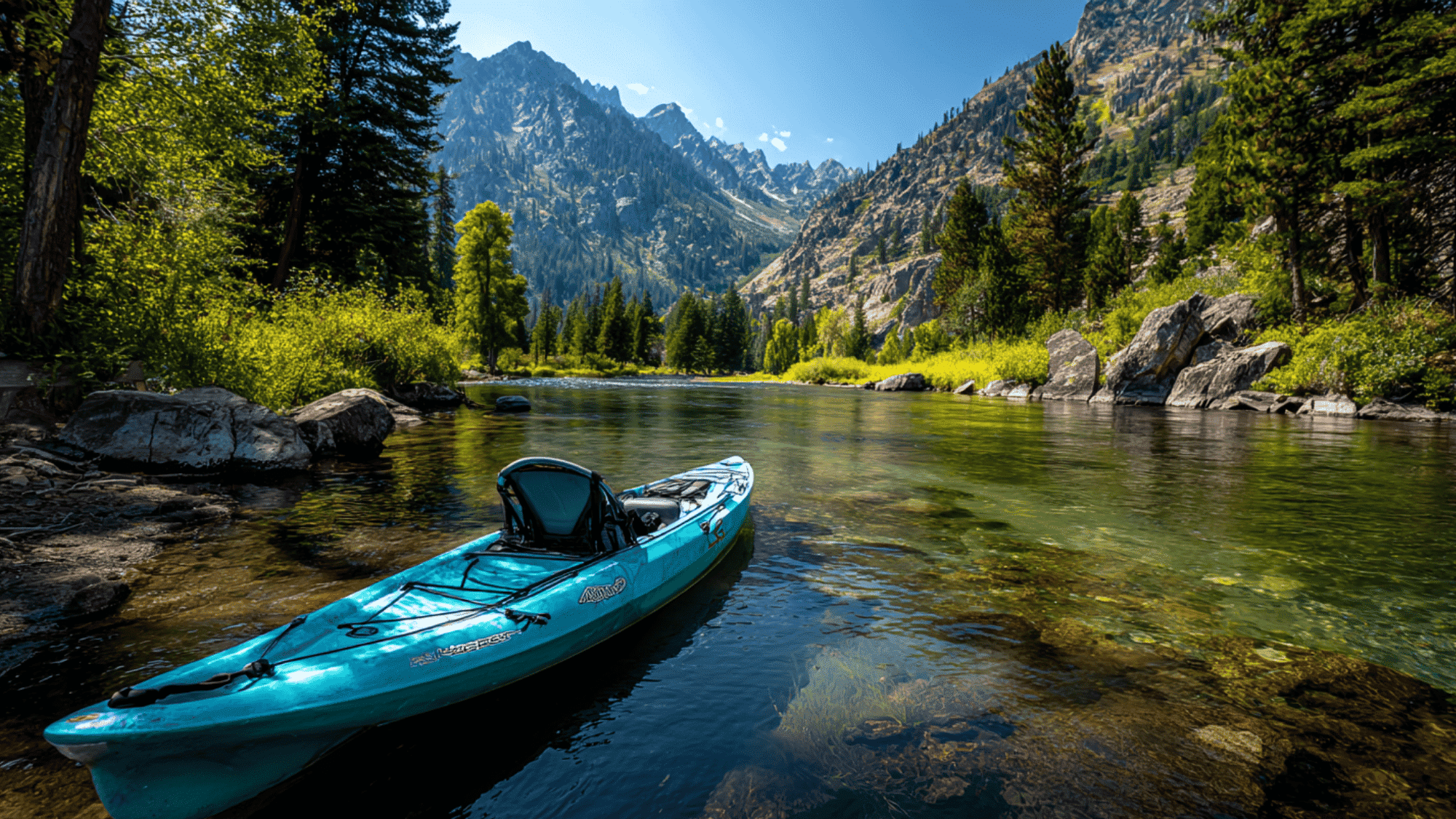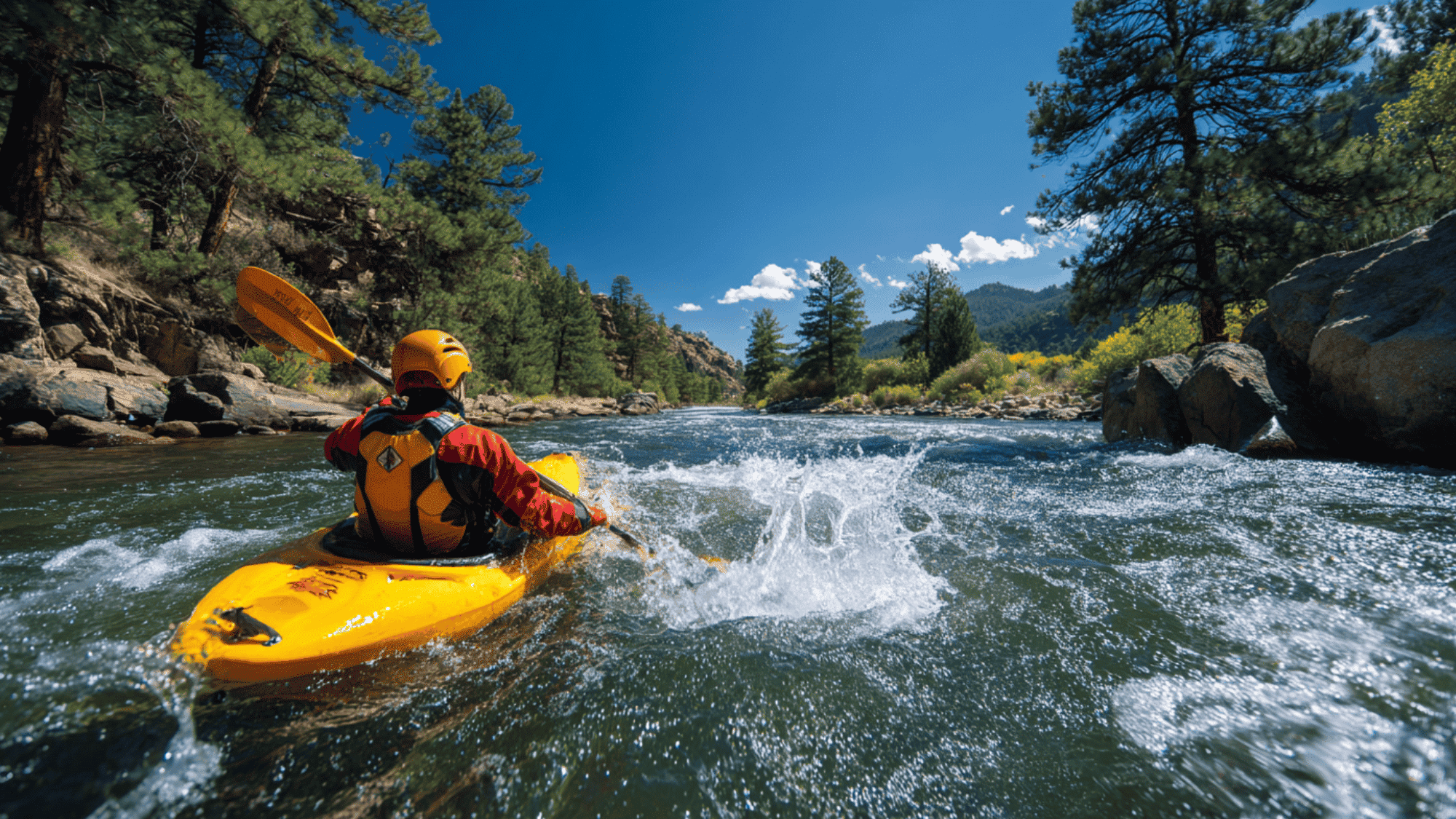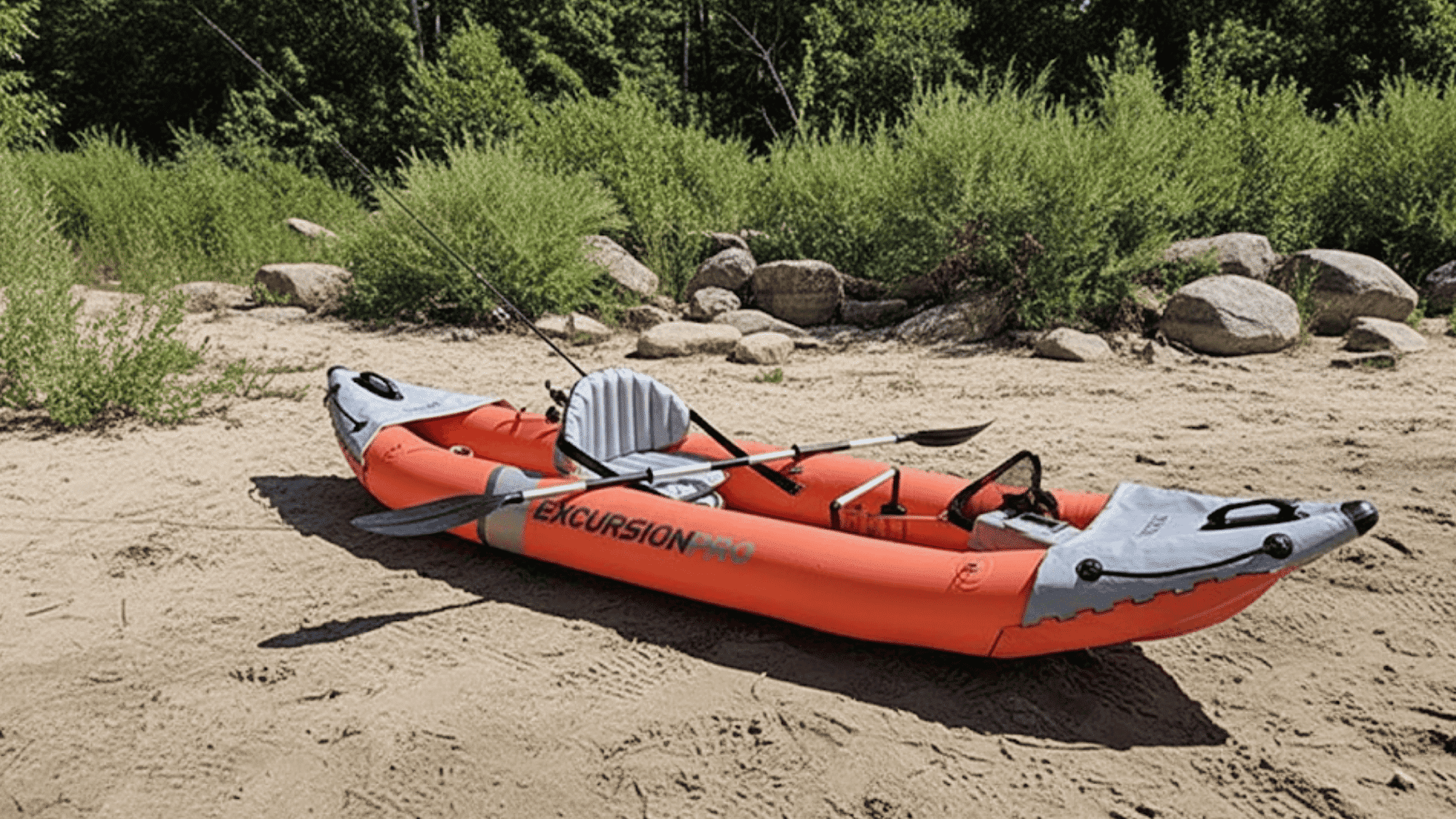Standing at the water’s edge with a paddle in hand, you face a choice that could shape your entire paddling experience.
Should you slip into the sleek cockpit of a kayak or settle into the open embrace of a canoe?
This decision isn’t just about personal preference; it affects everything from how fast you’ll travel to whether you can bring your dog along for the adventure.
Both kayaking and canoeing offer incredible ways to explore waterways, get exercise, and connect with nature, but they each have distinct characteristics that make them better suited for different situations and paddlers.
This guide will break down everything you need to know about canoe vs kayak options, from basic differences to specific types and uses.
What Is a Kayak? What Is a Canoe?
Understanding the fundamental differences between these two watercraft will help you make an informed decision.
Kayaks originated thousands of years ago with Arctic peoples who needed efficient hunting vessels.
Modern kayaks feature a closed deck with a cockpit where you sit with legs extended, using a double-bladed paddle.
Canoes developed across many cultures worldwide as versatile transportation and cargo vessels.
They have an open top design where you typically kneel or sit on a raised seat, propelling yourself with a single-bladed paddle.
Canoe vs Kayak: Popular Types for Each Watercraft
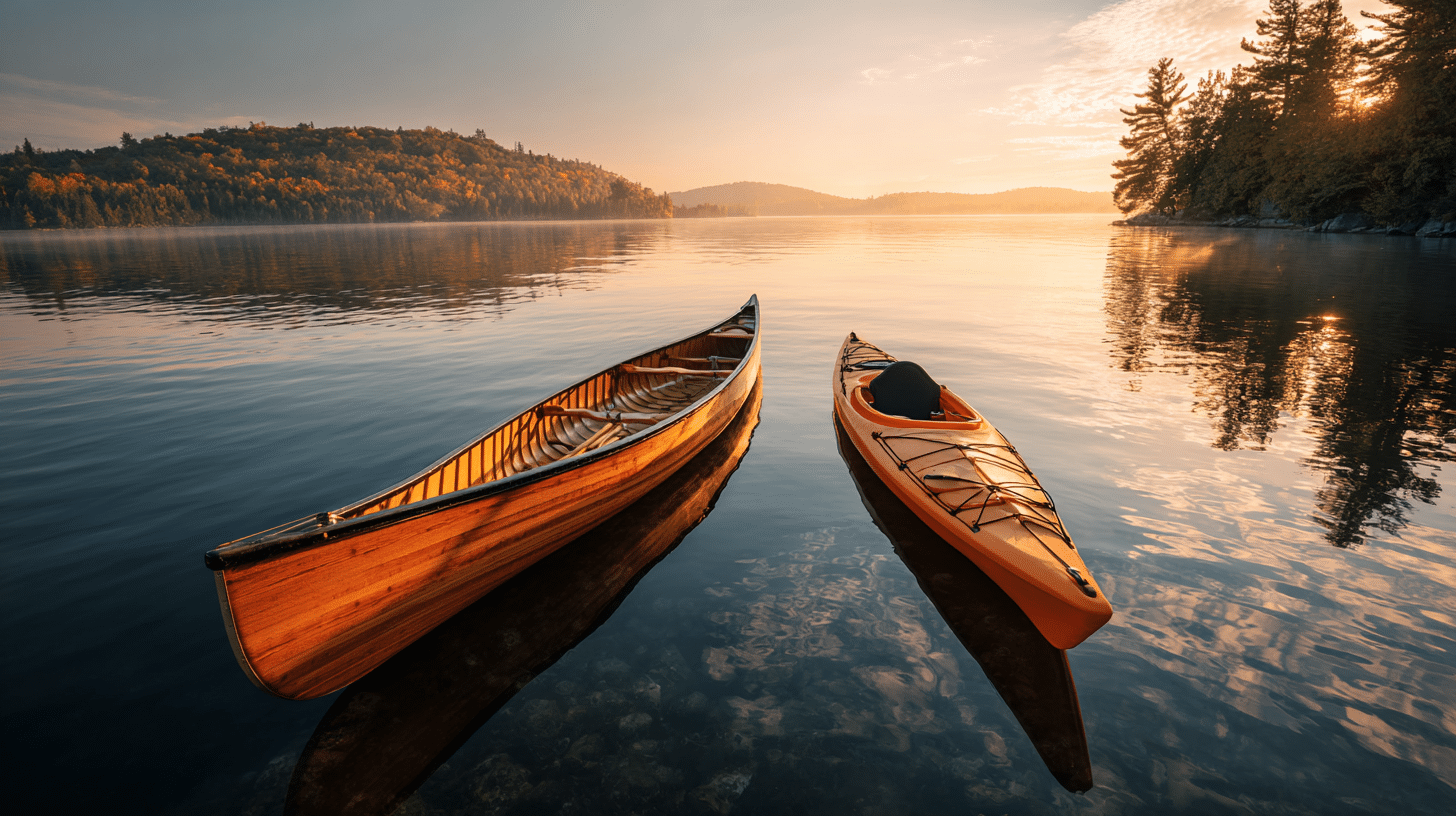
Each type of watercraft has been designed for specific conditions and uses. Here’s a comprehensive breakdown of the most popular varieties you’ll encounter.
Types of Kayaks
Here are the main kayak categories you’ll encounter, each designed for specific conditions and paddling styles:
-
Recreational Kayaks – Wide, stable, and forgiving for casual paddling on calm waters. Perfect for beginners who want to explore lakes and slow rivers.
-
Touring/Sea Kayaks – Longer and narrower for efficiency on longer trips. Built for ocean conditions and multi-day expeditions with storage compartments.
-
Whitewater Kayaks – Short, maneuverable designs for navigating rapids and rocky rivers. High rocker (curved hull) for quick turns.
-
Sit-on-Top Kayaks – No enclosed cockpit; you sit on a molded seat on top. Easy to get on and off, this spot is popular for warm weather and fishing.
-
Fishing Kayaks – Specialized with rod holders, tackle storage, and stable platforms for angling.
-
Inflatable Kayaks – Portable option that packs down for easy transport and storage.
Types of Canoes
Here are the main canoe categories you’ll encounter, each designed for specific conditions and paddling styles:
-
Recreational Canoes – Stable, forgiving designs perfect for family outings and casual lake paddling.
-
Touring/Expedition Canoes – Long, efficient hulls designed for multi-day trips with substantial gear capacity.
-
Whitewater Canoes – Shorter with higher rocker for navigating rapids, often with additional flotation.
-
Canadian Canoes – Traditional asymmetrical hull design developed for wilderness travel and portaging.
-
Solo Canoes – Shorter, narrower designs optimized for single paddlers.
-
Inflatable Canoes – Lightweight, packable options that work well for occasional use and easy transport.
Kayak vs Canoe: Key Differences
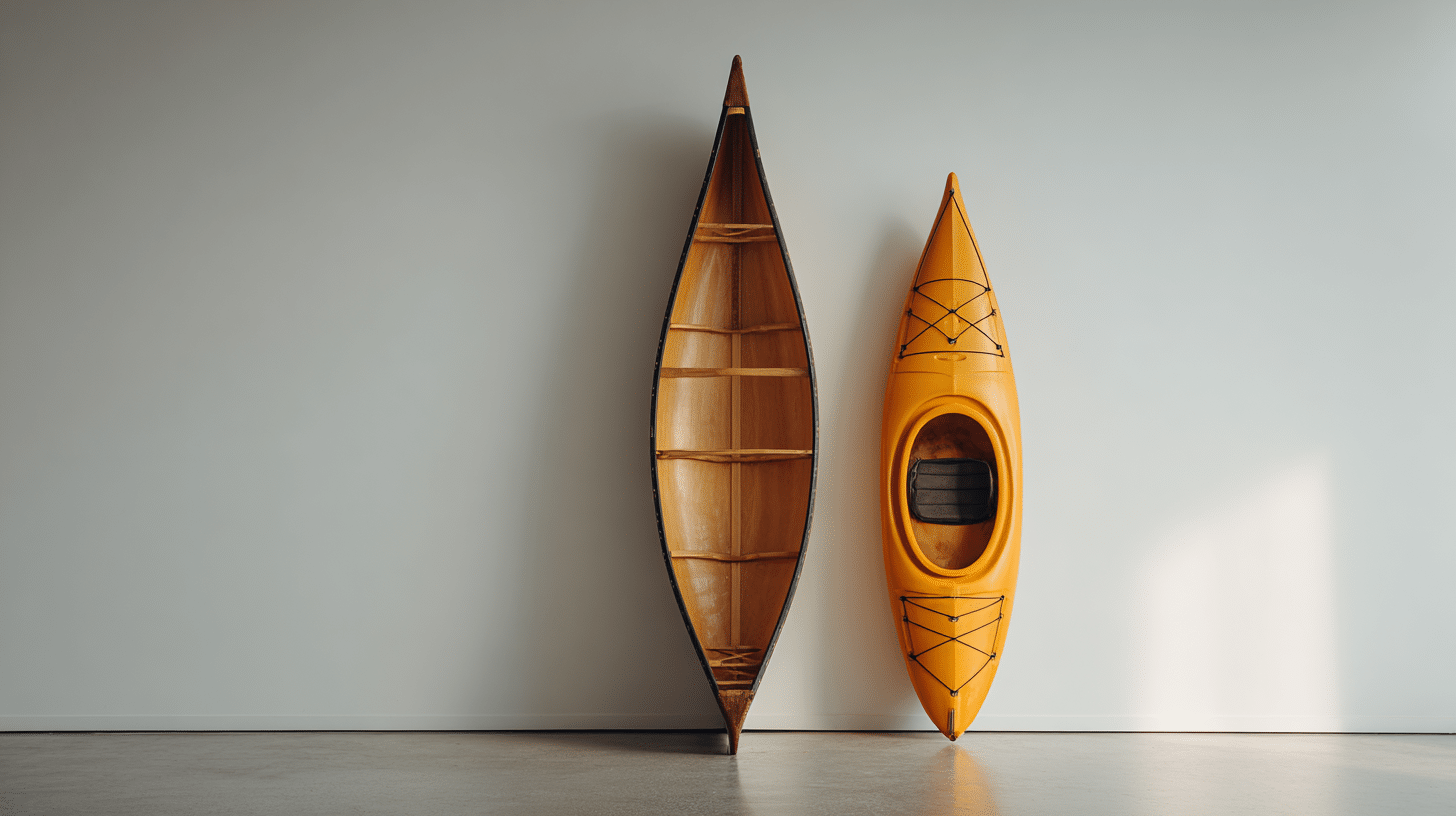
The distinctions between kayaking and canoeing go far beyond their appearance.
Understanding these key differences will help you choose the watercraft that best matches your paddling style and intended activities.
| Aspect | Kayak | Canoe |
|---|---|---|
| Size | 8-18ft long, 20-28in wide | 12-20ft long, 33-40in wide |
| Design | Enclosed cockpit, streamlined | Open top, wider |
| Paddle | Double-bladed | Single-bladed |
| Stability | Less initial, more secondary | More initial, less secondary |
| Speed | Faster | Slower |
| Storage | Limited, sealed compartments | Large open space |
| Weather Protection | Superior (enclosed) | Reduced (open) |
| Learning Curve | Simpler for beginners | Requires more technique |
| Best For | Speed, rough water, solo trips | Gear hauling, fishing, families |
Bottom Line:
- Choose a kayak if you want speed, efficiency, and weather protection
- Choose a canoe if you need cargo space, simple entry/exit, and flexibility
Canoe vs Kayak Uses: Where Each Watercraft Excels
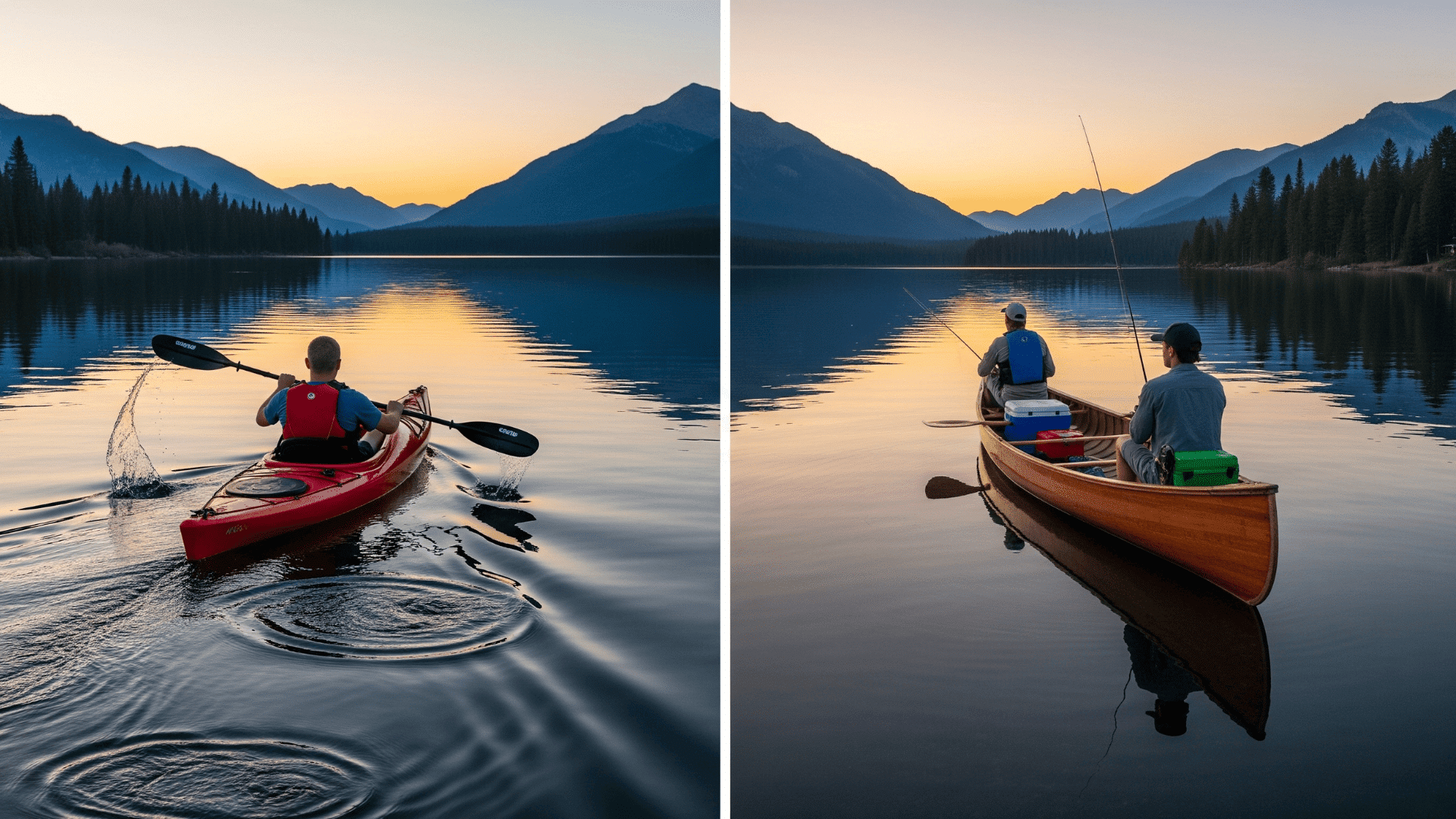
Different water conditions and activities favor one watercraft over the other. Here’s where each type truly shines and delivers the best experience for paddlers.
1. Calm Waters
Both watercraft work well for calm water recreation, but serve different purposes. Canoes offer superior comfort for leisurely exploration with spacious seating and easy entry/exit.
Kayaks excel when you want to cover more distance efficiently or prefer the supported seated position. The choice depends on whether you prioritize comfort and space or speed and efficiency.
2. Family Outings
Canoes clearly dominate family paddling with their open design that safely accommodates children and pets.
Large tandem kayaks can work for couples but require more coordination between paddlers. Canoes also make it easier to communicate and interact during the trip.
3. Rivers and Rapids
Whitewater kayaks reign supreme on technical rapids due to their maneuverability and low profile that cuts through turbulent water.
Canoes work well on gentler rivers and excel for multi-day river camping trips where cargo space is essential. The key is matching the craft to the river’s difficulty level.
4. Ocean Paddling
Sea kayaks are specifically engineered for coastal conditions, handling waves and wind with their streamlined hulls and sealed storage.
Large touring canoes can work in protected coastal areas but struggle in open ocean conditions. Weather protection becomes crucial for extended coastal adventures.
5. Fishing Activities
Both offer unique advantages for anglers depending on fishing style and location. Kayaks provide exceptional stealth, portability, and access to shallow areas, with specialized fishing models featuring rod holders and stable platforms.
Canoes offer more casting room, equipment storage, and the ability to move around while fishing. For hunting or camping, canoes’ superior cargo capacity makes them the clear choice for gear-heavy adventures.
Kayaking vs Canoeing: Pros and Cons Analysis
Weighing the advantages and disadvantages of each option will help clarify which watercraft aligns with your priorities. Here’s an honest assessment of what each brings to the table.
Kayaks
| Pros | Cons |
|---|---|
| Faster and more efficient paddling | Limited gear capacity |
| Better protection from the weather | Harder to get in/out of |
| More stable in rough water | Less comfortable for some people |
| Easier to handle in the wind | Difficult to change positions |
| Generally tracks straighter | Can feel claustrophobic |
| Takes up less storage space | Harder to paddle with pets or small children |
Canoes
| Pros | Cons |
|---|---|
| Excellent gear carrying capacity | More affected by the wind |
| Easy entry and exit | Generally slower than kayaks |
| Comfortable seating options | It can be harder to paddle solo |
| Room to move around | More exposure to the weather |
| Great for families and groups | Requires more storage space |
| Better for fishing and hunting | Less efficient paddling technique |
Both watercraft excel in different areas, so your choice should align with your specific paddling goals and conditions.
Canoe vs Kayak for Beginners: Learning Curve and Safety
Starting your paddling journey with the right watercraft can make all the difference in your early experiences on the water. Let’s examine which option might be more suitable for newcomers to the sport.
Initial Learning Experience
For absolute beginners, canoes often feel more approachable. The open design reduces anxiety, entry and exit are straightforward, and you can easily adjust your position if uncomfortable.
However, many find kayak paddling techniques easier to learn quickly. The double-bladed paddle creates a natural rhythm, eliminating the need to learn side-switching techniques.
Safety Considerations for Beginners
Regardless of which watercraft you choose, following these basic safety practices will ensure your paddling adventures remain enjoyable and incident-free:
|
Kayak vs Canoe Selection: Choosing the Best Option for You
Making the right choice requires honest self-assessment about your goals, conditions, and preferences.
Choose a kayak if you want to cover distance efficiently, prefer weather protection, or plan solo paddling adventures. They work better for windy conditions, coastal paddling, and tight spaces.
Choose a canoe if you prioritize comfort and gear space, want to paddle with family or pets, or prefer an open feeling. They excel on protected lakes, calm rivers, and when carrying substantial gear.
Consider your vehicle’s roof rack capacity and storage space; kayaks are generally easier to transport and store than canoes.
Conclusion
The choice between kayaking and canoeing comes down to your personal preferences and intended use.
Kayaks excel at speed and weather protection, making them ideal for distance paddling and challenging conditions.
Canoes offer superior comfort and cargo capacity, perfect for leisurely exploration and family adventures.
Many paddlers eventually own both, using each for different situations.
Remember, the best watercraft is the one that gets you on the water regularly. Both offer incredible opportunities for exercise, relaxation, and connecting with nature.
What’s your experience with kayaking vs canoeing? Share your thoughts and questions in the comments below!


